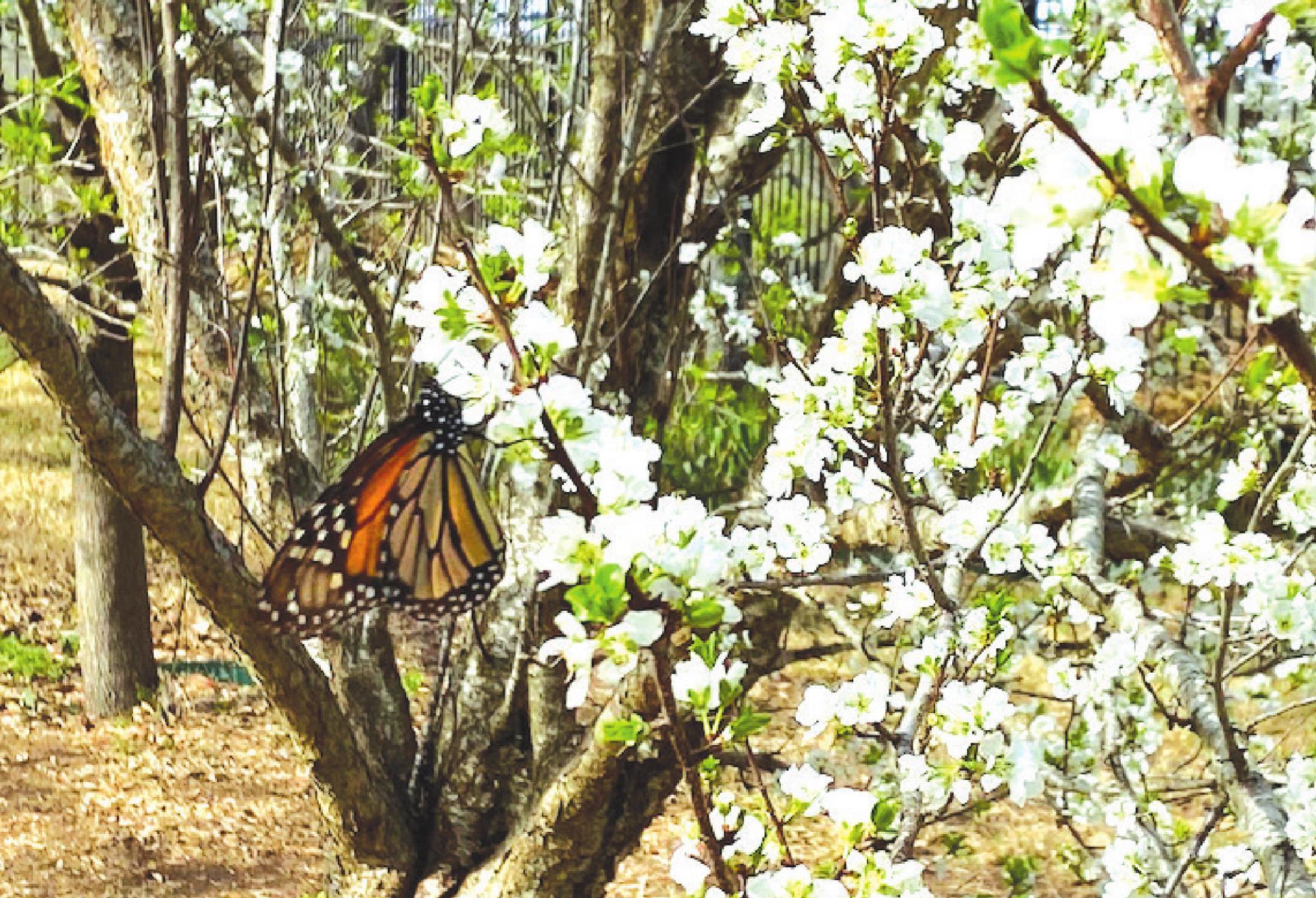
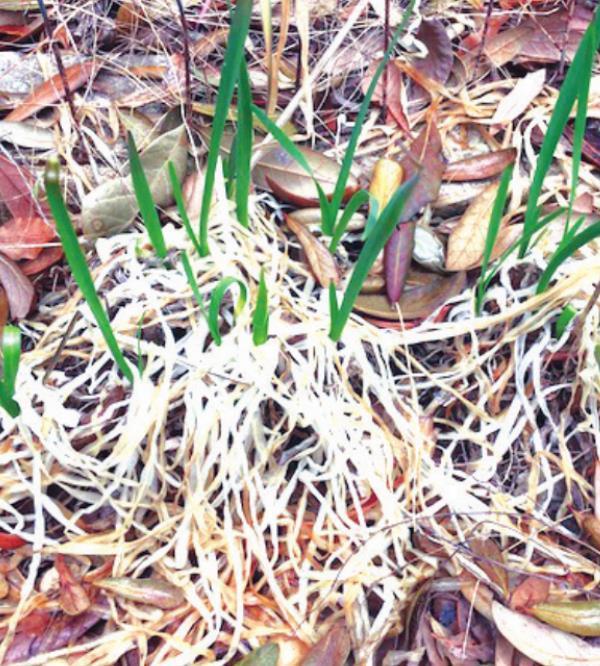
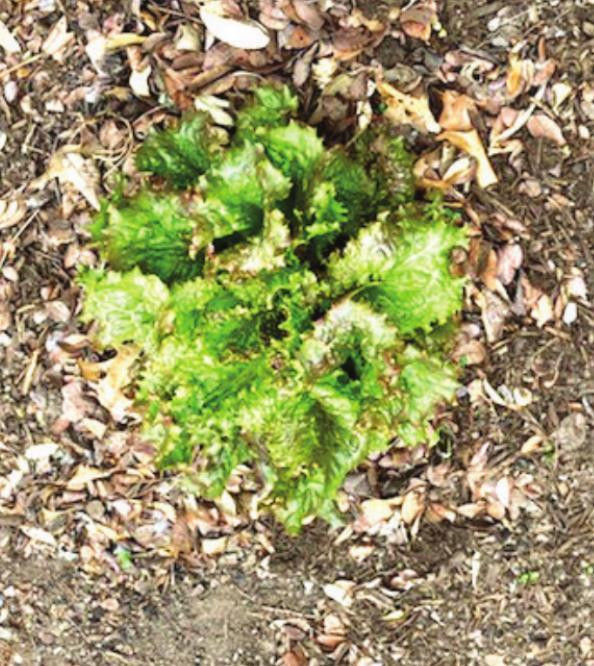
No darkness, no season can last forever. – Spring Day, BTS Top, a monarch butterfly visits Mexican plum blossoms in the Lindsey yard after the February freeze. Photo by Margaret Lindsey. Far left, amid a ring of frozen leaves, new shoots of society garlic emerge in the Gonzales yard. Photo by Cynthia Gonzales Center, a new lettuce plant, blanketed by snow during freeze, grows in the Rodriguez garden. Photo by Nancy Rodriguez
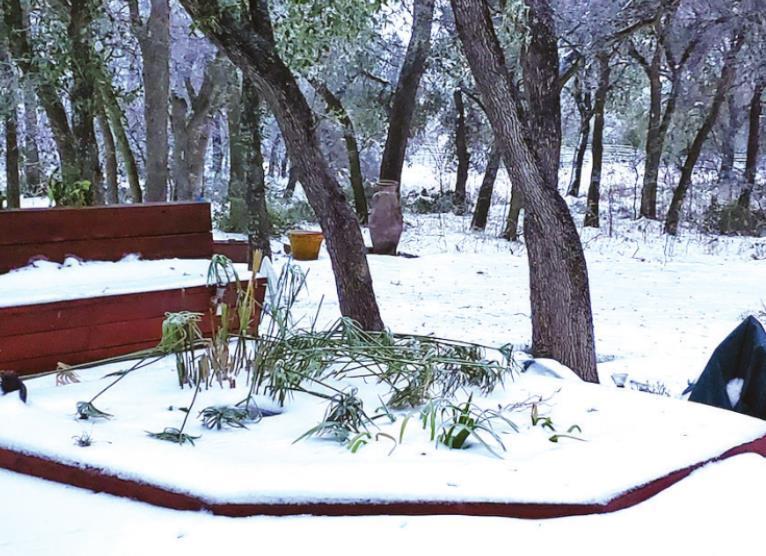
The frozen pond in the Reagan yard looked like a landscape disaster. Photo by Maggie Reagan
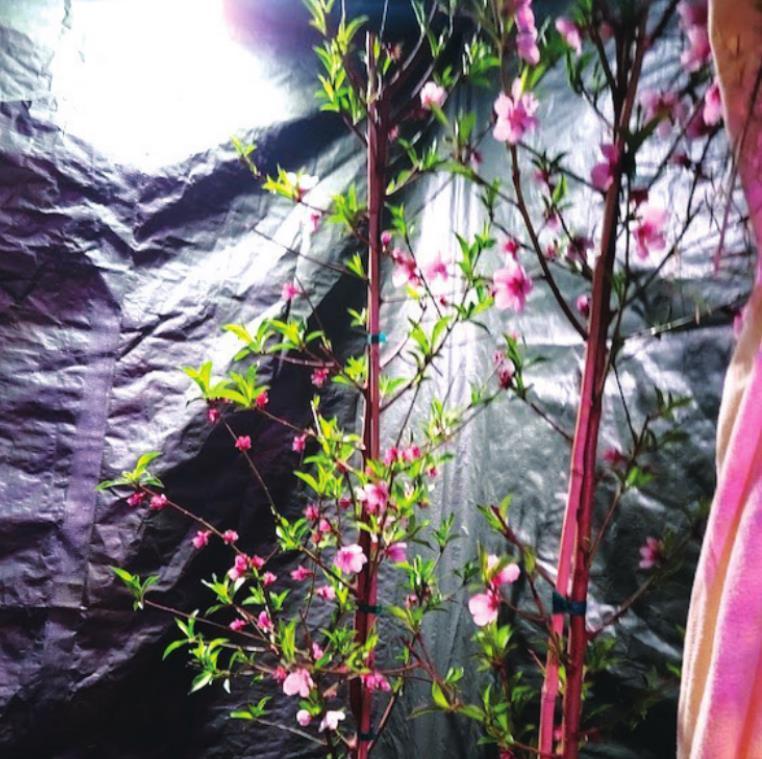
Sapling peach trees, sheltered in Peralez’s garden shed during freeze sent our new leaves. Photo by Charles Peralez
Spring Days Return
According to redbuds and other flowering trees, spring is here, even after ferocious February weather stressed plants with prolonged freezing temperatures. This April, the Spring Lake Garden Club celebrates a collective yard of the month, featuring photos from San Marcos yards that survived “Snovid 2021.”
Margaret Lindsey sent a photograph with a bonus: a Monarch butterfly visiting Mexican plum tree blossoms in her yard. Charles Peralez, Spring Lake Garden Club’s president, sent a photo of two peach trees purchased in January and sheltered in a “room” made by hanging tarps in his shed with grow lights and a small heater. After a two-day power failure, the sapling trees lost leaves and flowers, but put out new leaves about a week after the freeze.
Smaller miracles occurred in other yards after the freeze. Nancy Rodriguez’s photo shows a young lettuce plant continuing to grow after being protected by a blanket of snow. Cynthia Gonzales shared an image of new shoots of society garlic sprouting from yellowed remains of frozen leaves. And Maggie Reagan’s before-and-after photos of a frozen pond in her snow-covered yard prove that the calla lilies not only survived but are ready to bloom.
With leaves freeze-dried by extreme cold, live oaks dropped their foliage rapidly this year, instead of gradually shedding as new leaves emerge. Other trees have leafed out, yet some may delay for weeks. Texas A&M AgriLife Extension Service advises waiting until new buds begin to swell on stems before removing dead material, from blackened ends back to green wood. Clearing piles of mushy agaves and cacti removes decaying plant material so healthy tissue can grow, but prudent gardeners allow browned woody plants more time to heal before removing “dead” parts.
Instead of grabbing shears and a saw, homeowners can focus on laying in compost and plenty of mulch to cover it, to support new growth as plants recover. When dead plants are removed, evaluate the location, especially sun and wind exposure, before replacement. Many popular yard plants in Central Texas are at the edge of their range on the USDA Plant Hardiness Zone Map and unlikely to survive extreme cold temperatures unless sited in a sheltered “microclimate” on the south side of a house. Examples are trees such as huisache and retama (palo verde), and shrubs like oleander and rosemary (except the hardy “Arp” variety). Natives including cenizo (Texas Sage) and lantana usually grow back from roots, and hardy agaves and yuccas may send up new leaves from the central crown. Palms native to Texas will likely survive, but if the central meristem or growth source has died or is cut off, the plant will not produce new fronds.
Footnote on roses by Linda Keese, master gardener and Spring Lake Garden Club member: “The usual date for pruning roses, February 14, was missed because of the freeze, and now some are sporting blooms. My advice is to leave the canes with blooms and prune off only branches crossing in the middle of shrubs plus branches that are definitely dead. Later after blooms have wilted, trim up the rose bushes by pruning back a quarter of the top canes and all of the canes affected by the freeze. Pruning will promote growth, so apply a fertilizer half strength and water in thoroughly.”
As Ralph Waldo Emerson advised, “Adopt the pace of nature: her secret is patience.”
“Adopt the pace of nature: her secret is patience.”
– Ralph Waldo Emerson











